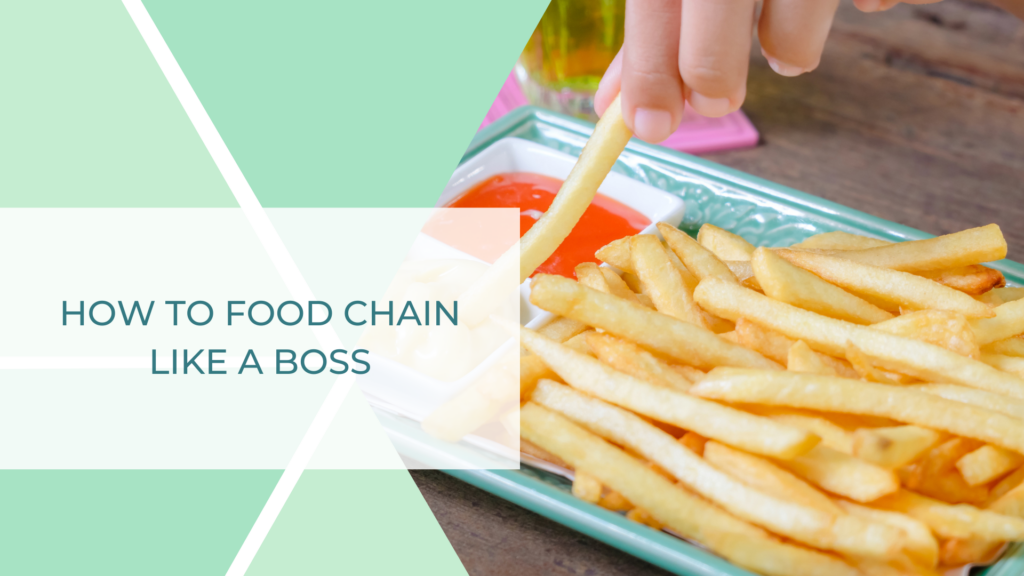
How often have you looked at the limited number of foods your child eats and seen an opportunity?
Never, right?
I know. It’s hard to see the glass half full when your child eats only one specific shape of macaroni and cheese from one specific brand. But after helping so many very selective eaters with autism expand their diets to include more foods, I now see potential when parents share their child’s minimal food list.
A Proven Strategy to Get Your Picky Kid with Autism to Eat More Foods
Would you believe me if I told you there is an effective way (well, several, actually) to get your picky eater with autism to try new foods? And that this way is rooted specifically in your child’s unique food preferences.
This one effective technique is called food chaining. I’ve mentioned it here, here, and here and today we’re diving deep into the subject.
This article will answer the following questions about food chaining:
-
What is food chaining?
-
Who does food chaining help?
-
Why does food chaining work for picky eaters with autism?
-
How can food chaining expand the diet of a picky eater with autism?
-
How helpful is food chaining really and how long will it take to work?
Plus you’ll learn:
-
Everything else there is to know about food chaining
-
How to develop a food chain for your picky eater all on your own
What Is Food Chaining?
Food chaining is a way to get your selective eater to try new foods. It takes into account the sensory properties of foods that your child likes and builds on his/her preferences. Essentially, food chaining is a tool that helps you identify which new foods your child is most likely to eat.
A food chain originates with an accepted food, one that your child eats willingly and reliably, and ends with an established goal food. The chain is created by making gradual changes to the accepted food. For example, a food chain may start with a child’s favorite brand of chicken nuggets and end with baked fish. The early stages of the chain can include new brands and shapes of chicken nuggets. Gradually, as a child comes to routinely accept the new foods, the offerings evolve to something similar yet completely new like breaded fish nuggets and eventually baked fish.
Who Does Food Chaining Help?
Food chaining is beneficial for any restrictive eater and is especially beneficial for children whose sensory experience interferes with eating.
Food chaining requires intentionality and is most effective with close monitoring and assessment, so it works best for families who have the time and energy to commit to the process or those who are interested in working with the support of a professional.
Why Food Chaining Works for Picky Eaters with Autism
Food chaining isn’t your typical “try this new food” approach. Instead of offering your child foods you want them to eat, hoping that maybe, just maybe this time will be different, you are strategically introducing foods they are likely to eat. You cater to their preferences and make small changes while waiting to advance until new foods become accepted foods.
Part of why food chaining works so well for very restrictive eaters and kids with sensory food aversions, like many on the autism spectrum, is because it takes into account the sensory experience of eating. The approach seeks to minimize the anxiety that many picky eaters experience when asked to eat a new food.
How Food Chaining Can Expand the Diet of a Picky Eater with Autism
First, accepted foods are assessed for their similarities in texture, shape, flavor, color, etc. A parent – maybe with input from their child and/or a dietitian or feeding therapist – can then identify the accepted food and a goal food. From there, very small changes in accepted foods are gradually introduced. The child’s reaction to and acceptance of each small change is carefully evaluated. This information is used to inform future steps in the chain.
How Helpful is Food Chaining Really and How Long Will It Take to Work?
Food chaining can take time. Progress will depend on the child and the goal. But remember, every step of the food chain is progress. Every child I’ve used food chaining with has benefited.
In a clinical study, after three months of food chaining feeding therapy, ten selective eaters increased their median number (middle number) of accepted foods increased from 5 to 20.5.
Recap
Food chaining is a tool that helps you identify foods that your child is most likely to eat. Food chaining gives you a framework for introducing new foods in a way that your child is most likely to accept. Essentially it’s an individualized and systematic approach to help your picky eater try new foods. It is based on your child’s food preferences and the sensory profile of those foods. Food chaining starts with an assessment of the flavor, texture and visual properties of your child’s favorite foods and ends with a selected goal food.



0 Comments